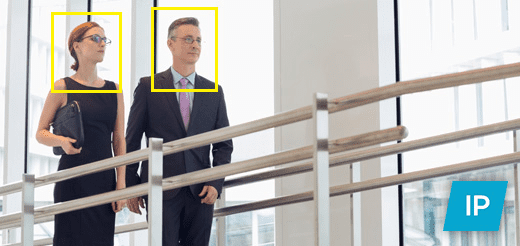What is Security Camera Face Recognition?
Security camera face recognition technology can be used for various purposes, such as access control, time and attendance tracking, and investigations. For example, in an airport, it can be used to match passengers’ faces with their passport photos and grant them access to the boarding area. In a retail store, it can be used to match a customer’s face with their loyalty card, and track their movements and behavior within the store.
The technology can be integrated into existing security systems, and can be used in conjunction with other security measures such as access control systems, biometric scanners, and surveillance cameras. Some security camera face recognition systems can also be integrated with data from other sources, such as social media, to provide additional information about individuals.
There are two main types of security camera face recognition: one-to-one, and one-to-many.
- One-to-one face recognition compares an individual’s facial image with a single image in a database, such as a passport photo or a driver’s license photo, to confirm their identity.
- One-to-many face recognition compares an individual’s facial image with a large database of facial images to find a match. This type of recognition is often used in security applications to identify individuals on a watchlist or to track known individuals.
Security camera face recognition technology, as any technology, has some limitations and challenges. One of the main challenges is the accuracy of the technology, especially in identifying people of color, women, and children. Also, the quality of the image captured can affect the accuracy of the recognition. The lighting conditions, the angle of the face, and the presence of glasses, masks, or other obstructions can all affect the performance of the system.
Another challenge is related to privacy and civil liberties. The use of security camera face recognition raises important privacy concerns, as it involves collecting and storing personal information, and can be used to track individuals without their knowledge or consent. There are also concerns about the potential for misuse of the technology, such as profiling, discrimination, or surveillance.
It is important for organizations using security camera face recognition to have clear policies in place for data collection, storage, and use, and to consider the potential impact on individuals’ privacy and civil liberties. They should also be transparent about the use of the technology and provide information about how the data is collected, stored, and used.



